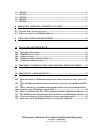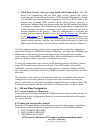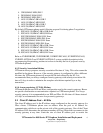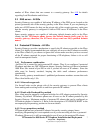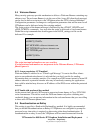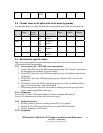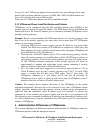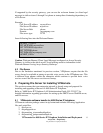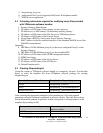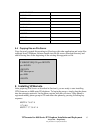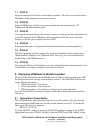VPNremote for 4600 Series IP Telephone Installation and Deployment
Avaya Inc. - Proprietary
Use pursuant to Company Instructions.
11
In case of 1 and 2 VPNremote phone will not encounter any errors during tunnel setup
but will fail to register with the call server on 4620, 4621, 4622 and 4610 models and
there will not be any dial tone on 4625 models.
In the case of 3 VPNremote phones will fail to establish talk path.
3.10 VPNremote Phone Load Distribution and Failover
VPNphones can be configured with the fully qualified domain name (FQDN) of the
security gateway instead of actual IP address. Use DNS Name Server Load Balancing
feature and size of the Client IP address pool to uniformly distribute VPNphones across
multiple security gateways.
Example: How to evenly distribute 500 VPNremote phones on 5 security gateways such
that if one of the security gateway goes down there are no more than 125 VPNremote
phones on one security gateway.
1. Configure DNS server to return security gateway IP addresses in a round robin
fashion. The DNS server returns all IP addresses in response to a DNS query but
keeps changing the order of the list which means each subsequent VPNphone will
get a different one of the 5 IP addresses.
2. Limit the size of Client IP address pool to 125 on each security gateway. Initially
when all security gateways are available there will be 100 VPNremote phones on
each security gateway. If one of the security gateway goes down for some reason,
all 100 VPNremote phones connected to that security gateway will reboot in
approximately 6 minutes and redistribute evenly among remaining 4 security
gateways because of the limit on Client IP address pool.
3. Let’s see what would have happened if you had not imposed limit of 125 on
Client IP address pool. Say the 5 security gateways are A, B, C, D and E. DNS
server is rotating this list after every DNS query. Now C goes down. All
VPNphones connected to C will reboot and D will end up absorbing 40
VPNphones from C while A, B and E will absorb only 20 VPNphones from C
because of the lack of limit on Client IP address pool.
Caution: The example above assumes that none of the VPNphones in the system
terminated abnormally. However this is far from true. Every time a VPNphone restarts
without gracefully shutting down the previous session it might end up consuming two
addresses from the cumulative client IP address pool. For example if a phone was
connected to A but restarted due to power failure and next time it got connected to B.
This phone has now consumed an additional IP address from cumulative IP address pool.
As a rule of thumb always keep the cumulative size of IP address pool 15% more than the
number of VPNphones.
4 Administration Differences of VPNphones
This section highlights the differences between administration of VPNphones and non-
VPNremote phones within the enterprise network.



